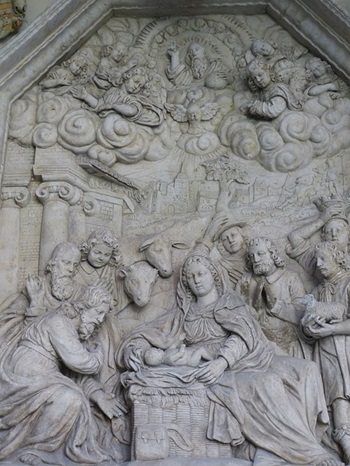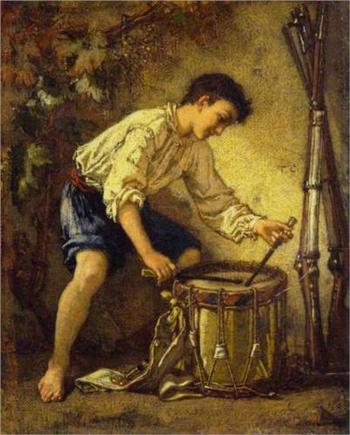
Picture this: You eat a plate of macaroni and cheese, followed by a macaron cookie, all the while listening to music with a macaronic text and wearing the costume of a macaroni. Have I finally gone completely over the edge, and what on earth does all this have to do with the Christmas carol “In Dulci Jubilo”?
Well, I’ll tell you. No, I haven’t lost it, because all of these macaronical words are related and come, at least indirectly, from the Sicilian word maccarruni, which refers to foods made from some type of paste, either flour based or almond based. (The word “pasta” in and of itself simply means “paste.”) There’s a long, long trail a-windin’ here, with Arabic influences in Sicily resulting in the melding of many North African foods with Italian ones. Here’s a summary from an excellent article in Slate:
The pasta and the almond-pastry traditions merged in Sicily, resulting in foods with characteristics of both. Early pastas were often sweet, and could be fried or baked as well as boiled. Many recipes from this period exist in both a savory cheese version and a sweet almond-paste version that was suitable for Lent, when neither meat nor cheese could be eaten. . . . Out of this culinary morass arises, circa 1279, the word maccarruni, the Sicilian ancestor of our modern words macaroni, macaroon, and macaroni.1



 Let’s get the two guys out of the way first. Here’s what I found: the names are common in old French carols, where they are rendered as “Guillô” and, well, “Robin.” The French version of “Willie” is pronounced “Gwee-yo.” Robin’s name is “Ro-bɛ̃,” with that funny-looking “e” being fairly nasal and the “n” not really being pronounced at all—it’s just a marker for the nasal sound. Everybody got that? Anyway, I’m sure if I dug around long enough I could discover why these two names are sort of generic, but I’ll leave it at that, because there’s more ground to cover here. You can just figure that Willie and Robin are like Jack and Jill, or Jim and John, or Lucy and Ethel. (But see the note at the very end of this post about the alternate names that Karl Jenkins used in his arrangement of this carol.)
Let’s get the two guys out of the way first. Here’s what I found: the names are common in old French carols, where they are rendered as “Guillô” and, well, “Robin.” The French version of “Willie” is pronounced “Gwee-yo.” Robin’s name is “Ro-bɛ̃,” with that funny-looking “e” being fairly nasal and the “n” not really being pronounced at all—it’s just a marker for the nasal sound. Everybody got that? Anyway, I’m sure if I dug around long enough I could discover why these two names are sort of generic, but I’ll leave it at that, because there’s more ground to cover here. You can just figure that Willie and Robin are like Jack and Jill, or Jim and John, or Lucy and Ethel. (But see the note at the very end of this post about the alternate names that Karl Jenkins used in his arrangement of this carol.)